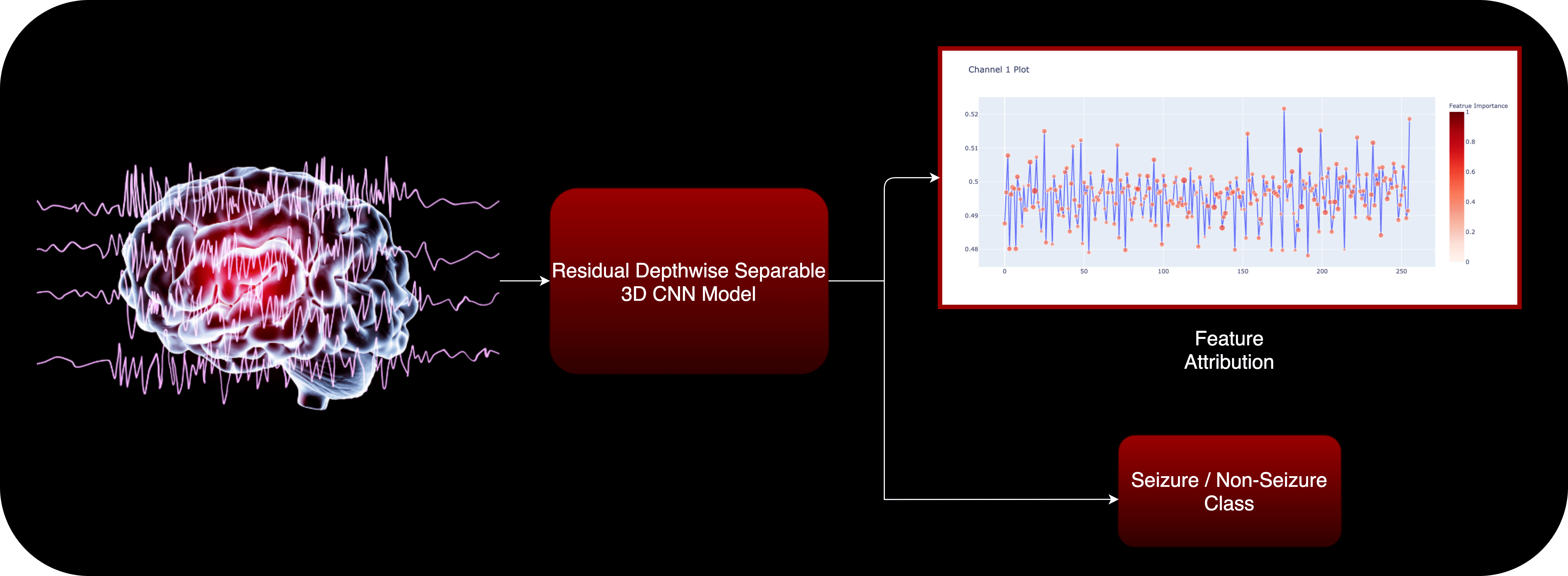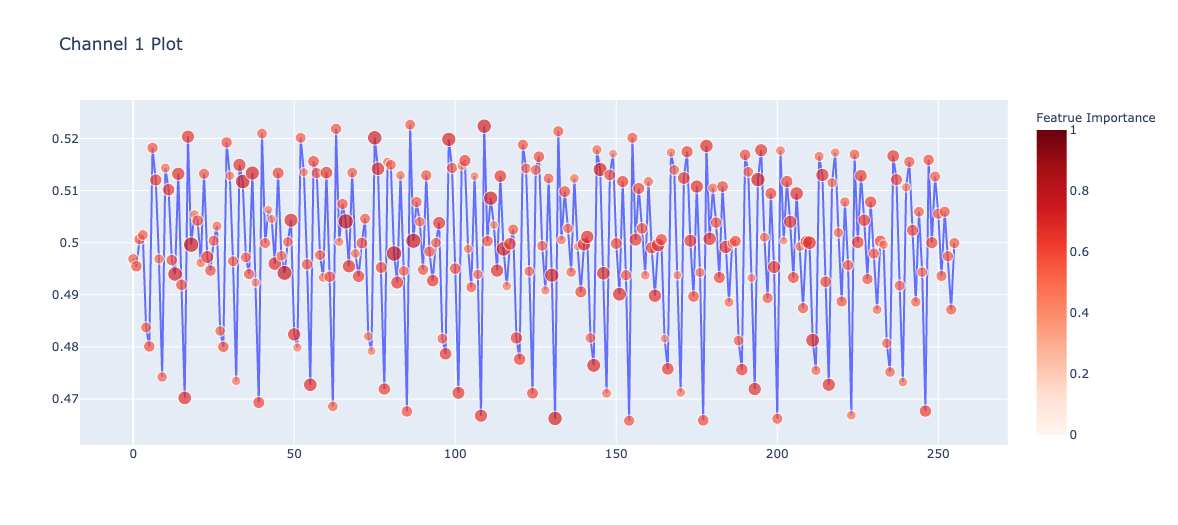An epileptic seizure results from epileptic activity developing over time and space in epileptic networks. A manual evaluation of an electroencephalogram (EEG) for seizure detection is time-consuming and error-prone. For this reason, automated seizure detection based on machine learning is being investigated. The use of deep learning to reduce the need for manual feature extraction and selection has recently become more popular. In this study, we propose a 3D CNN model utilizing the residual depthwise separable convolution that takes into consideration multi-channel EEG signals. The model consists of one standard convolution block and four residual depthwise separable convolution blocks, followed by fully connected layers. In addition, we explain the models using an integrated gradient-based feature attribution method.

Explainable Seizure Detection using Residual 3D Depthwise Separable Convolution
Abstract
Technologies:
- - Python
- - Pytorch
- - Captum (for feature attribution)
- - Numpy
- - Pandas
- - Plotly
- - LaTeX
Pipeline
.png)
Dataset
The database used in this study was an open-source EEG database from CHB-MIT. The recordings were collected from 23 children with epilepsy using scalp electrodes, and EEG data were provided by the Massachusetts Institute of Technology (MIT, USA). The study included 17 females that ranged in age from 1.5 to 19 years and five males that ranged in age from 3 to 22 years. The age and sex information for one child was lost. All subjects were asked to stop related treatments one week before data collection. The sampling frequency for all patients was 256 Hz. The seizure start and end times were labeled explicitly based on expert judgments, and the number and duration of seizure events varied for each subject.
A sliding window of 1 second was used to get a single data point. The electrode channel was considered as the depth of volume of the image, and length being the time and single-dimensional width. The transformed raw EEG data was fed to the neural network.
Results on CHB-MIT dataset
| Model | Accuracy | Precision | Sensitivity | Specificity | F1 Score |
|---|---|---|---|---|---|
| 3D CNN | 84.00 | 85.55 | 81.71 | 86.13 | 83.23 |
Feature Attribution Examples

.png)

_non.png)